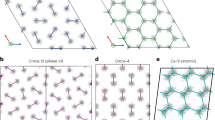Abstract
The equation of state of liquid metallic hydrogen is solved numerically. Investigations are carried out at temperatures from 3000 to 20 000 K and densities from 0.2 to 3 mol/cm3, which correspond both to the experimental conditions under which metallic hydrogen is produced on earth and the conditions in the cores of giant planets of the solar system such as Jupiter and Saturn. It is assumed that hydrogen is in an atomic state and all its electrons are collectivized. Perturbation theory in the electron-proton interaction is applied to determine the thermodynamic potentials of metallic hydrogen. The electron subsystem is considered in the randomphase approximation with regard to the exchange interaction and the correlation of electrons in the local-field approximation. The proton-proton interaction is taken into account in the hard-spheres approximation. The thermodynamic characteristics of metallic hydrogen are calculated with regard to the zero-, second-, and third-order perturbation theory terms. The third-order term proves to be rather essential at moderately high temperatures and densities, although it is much smaller than the second-order term. The thermodynamic potentials of metallic hydrogen are monotonically increasing functions of density and temperature. The values of pressure for the temperatures and pressures that are characteristic of the conditions under which metallic hydrogen is produced on earth coincide with the corresponding values reported by the discoverers of metallic hydrogen to a high degree of accuracy. The temperature and density ranges are found in which there exists a liquid phase of metallic hydrogen.
Similar content being viewed by others
References
E. Wigner and H. B. Huntington, J. Chem. Phys. 3, 764 (1935).
S. T. Weir, A. C. Mitchell, and W. J. Nellis, Phys. Rev. Lett. 76, 1860 (1996).
W. J. Nellis, A. C. Mitchell, P. C. McCandless, et al., Phys. Rev. Lett. 68, 2937 (1992).
E. G. Brovman, Yu. Kagan, and A. Holas, Zh. Éksp. Teor. Fiz. 61, 2429 (1971) [Sov. Phys. JETP 34, 1300 (1971)].
P. S. Hawke, T. J. Burgess, D. E. Duerre, et al., Phys. Rev. Lett. 41, 994 (1978).
S. A. Bonev and N. W. Ashcroft, Phys. Rev. B 64, 224112 (2001).
K. Nagao, S. A. Bonev, and N. W. Ashcroft, Phys. Rev. B 64, 224111 (2001).
V. V. Kechin, Pis’ma Zh. Éksp. Teor. Fiz. 79, 46 (2004) [JETP Lett. 79, 40 (2004)].
E. G. Maksimov and Yu. I. Shilov, Usp. Fiz. Nauk 169, 1223 (1999) [Phys. Usp. 42, 1121 (1999)].
V. T. Shvets, S. V. Savenko, and Ye. K. Malinovskiy, Condens. Matter Phys. 9, 1 (2006).
V. T. Shvets, The Green Function Method in the Metal Theory (Latstar, Odessa, 2002) [in Russian].
E. G. Brovman and Yu. M. Kagan, Usp. Fiz. Nauk 112, 369 (1974) [Sov. Phys. Usp. 17, 125 (1974)].
I. A. Vakarchuk, Introduction to the Many Body Problem (Lvovsk, Nats. Univ., Lviv, 1999) [in Russian].
W. H. Shih and D. Stroud, Phys. Rev. B 31, 3715 (1985).
P. Lloyd and C. A. Sholl, J. Phys. C 1, 1620 (1968).
E. G. Brovman and Yu. Kagan, Zh. Éksp. Teor. Fiz. 63, 1937 (1972) [Sov. Phys. JETP 36, 783 (1972)].
E. G. Brovman and A. Holas, Zh. Éksp. Teor. Fiz. 66, 1877 (1974) [Sov. Phys. JETP 39, 924 (1974)].
J. Hammerberg and N. W. Ashcroft, Phys. Rev. B 9, 3999 (1974).
L. Ballentine and V. Heine, Philos. Mag. 9, 617 (1964).
D. J. M. Geldart and S. H. Vosko, Can. J. Phys. 44, 2137 (1966).
V. T. Shvets and E. V. Belov, Acta Phys. Pol. A 96, 741 (1999).
V. T. Shvets, Phys. Met. Metallogr. 89, 211 (2000).
I. R. Yukhnovskiĭ and M. F. Golovko, Statistical Theory of Classical Equilibrium Systems (Naukova Dumka, Kiev, 1987) [in Russian].
Author information
Authors and Affiliations
Additional information
Original Russian Text © V.T. Shvets, 2007, published in Zhurnal Éksperimental’noĭ i Teoreticheskoĭ Fiziki, 2007, Vol. 131, No. 4, pp. 743–749.



